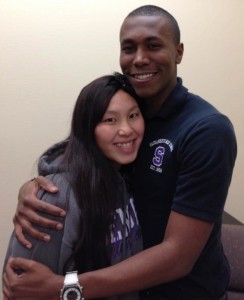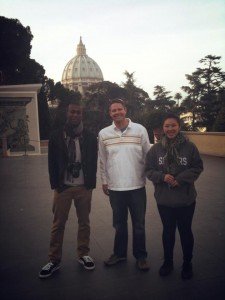TOURISM, THE BIG PICTURE
Tourism is big business. According to the World Tourism Organization (WTO) tourism has grown at an amazing rate in the last 30 years. Currently, the business of travel (comprising everything from airlines to resorts to boutique organizations like Context) represents 6% of the entire global GDP and nearly 30% of the entire service economy. Total tourism receipts in 2004 were $622 billion. According to the WTO, tourism is on track to eclipse oil as the single largest industry on the planet by 2010.
Like all big industries tourism has an impact on the environment, local economies, and the social and cultural fabric of the places where it operates. If not managed properly a tourism program can easily become extractive, over time reducing the value of a destination rather than enhancing it. This is obvious in places like Rome, Paris, Venice, and Florence—European cities that are among the most touristed places on the planet and where the presence of huge crowds diminishes the meaning of monuments; tour buses emit huge amounts of air pollution; and small businesses lose out to tourist-friendly chains able to serve the lowest common denominator. Over time, mass tourism strips a place of its character and turns entire quarters of a city into mere “tourist zones.”?
RESOURCES & NOTES
The World Tourism Organization (WTO) is the UN agency for tourism. They produce some of the best reports on tourism economics and also advocate for tourism as a tool for economic development. The numbers cited here are drawn from their published statistics.
Sustainable Tourism International is an American non-profit that provides education and outreach services that will lessen the toll that travel and tourism takes on the environment and local cultures. STI’s blend of environmental and cultural sustainability was veryinfluential in our thinking.
National Geographic’s Geotourism program was also quite important to us and serves an important blueprint for travelers and travel businesses alike.
Treehugger, a great resource for environmental sustainability, published a good report on carbon offset programs, which influenced the course of our program.
NATIONAL GEOGRAPHIC SOCIETY’S GEOTOURISM PROGRAM
Context has modeled its Sustainable Travel Program in part on the National Geographic Society’s Geotourism program. Context founder Paul Bennett sits on the Society’s panel for sustainable tourism and is a contributor to both National Geographic and National Geographic Adventure. The following is taken from NGS’s geotourism website:
About Geotourism
Geotourism is defined as tourism that sustains or enhances the geographical character of a place—its environment, culture, aesthetics, heritage, and the well-being of its residents. Geotourism incorporates the concept of sustainable tourism—that destinations should remain unspoiled for future generations—while allowing for enhancement that protects the character of the locale. Geotourism also adopts a principle from its cousin, ecotourism, that tourism revenue can promote conservation, and extends that principle beyond nature travel to encompass culture and history as well: all distinctive assets of a place.
What is Sustainable Tourism?
Sustainable tourism, like a doctor’s code of ethics, means “First, do no harm.” It is basic to good destination stewardship.
Sustainable tourism does not abuse its product—the destination. It seeks to avoid the “loved to death” syndrome. Businesses and other stakeholders anticipate development pressures and apply limits and management techniques that sustain natural habitats, heritage sites, scenic appeal, and local culture. It conserves resources. Environmentally aware travelers favor businesses that minimize pollution, waste, energy consumption, water usage, landscaping chemicals, and excessive nighttime lighting. It respects local culture and tradition. Foreign visitors learn about and observe local etiquette, including using at least a few courtesy words in the local language. Residents learn how to deal with foreign expectations that may differ from their own.
It aims for quality, not quantity. Communities measure tourism success not by sheer numbers of visitors, but by length of stay, distribution of money spent, and quality of experience.
What is Geotourism?
Geotourism adds to sustainability principles by building on geographical character—”sense of place”—to create a type of tourism that emphasizes the distinctiveness of its locale, and that benefits visitor and resident alike.
Geotourism is synergistic: All the elements of geographical character together create a tourist experience that is richer than the sum of its parts, appealing to visitors with diverse interests.
It involves the community. Local businesses and civic groups work together to promote and provide a distinctive, authentic visitor experience.
It informs both visitors and hosts. Residents discover their own heritage and how the ordinary and familiar may be of interest to outsiders. As local people develop pride and skill in showing off their locale, tourists get more out of their visit.
It benefits residents economically. Travel businesses do their best to use the local workforce, services, and products and supplies. When the community understands the beneficial role of geotourism, it becomes an incentive for wise destination stewardship.
It supports integrity of place. Destination-savvy travelers seek out businesses that emphasize the character of the locale. Tourism revenues in turn raise local perceived value of those assets.
It means great trips. Enthusiastic visitors bring new knowledge home, telling stories that send friends and relatives off to experience the same thing—a continuing business for the destination.
Reprinted with permission of the National Geographic Society


